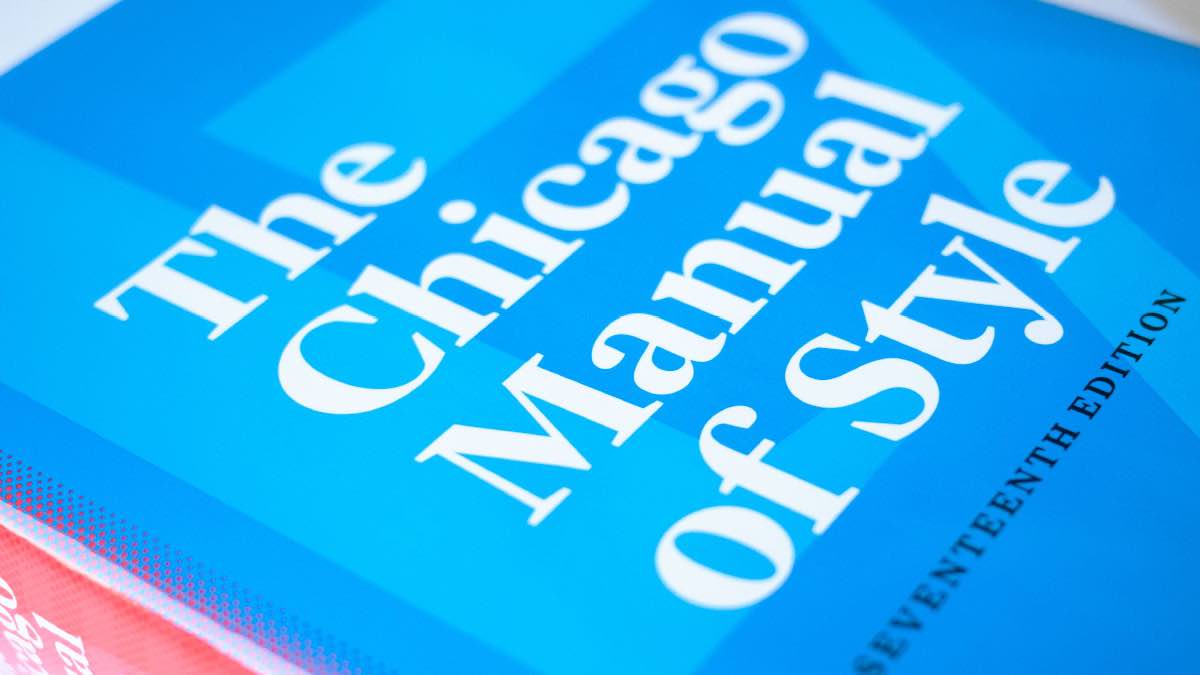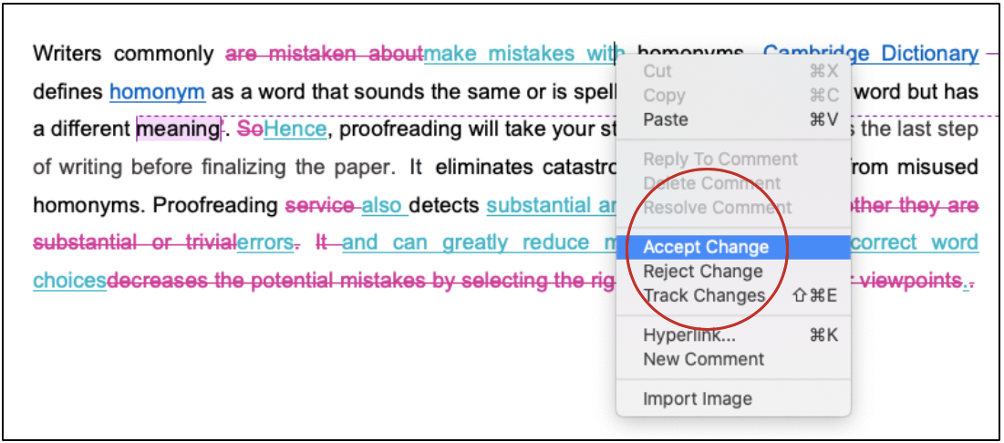When you enter the academic field or just begin writing a thesis, a dissertation, or an article for e peer-review journal, you will fumble upon countless new writing styles, fonts, formats, and citation styles. Academic writing differs from other forms of writing because it often follows a set of structures and involves the use of formal language, grammar, and words. Thus, you need to write in a particular style that carries its own rules and regulations. This article discusses the details and main rules of the Chicago Style Citation.

This brief guide gives you the basic rules of Chicago Style Citation. To give you an opportunity to practice proofreading, we have left a few spelling, punctuation, or grammatical errors in the text. See if you can spot them! If you spot the errors correctly, you will be entitled to a 10% discount.
When you enter the academic field or just begin writing a thesis, a dissertation, or an article for e peer-review journal, you will fumble upon countless new writing styles, fonts, formats, and citation styles. Academic writing differs from other forms of writing because it often follows a set of structures and involves the use of formal language, grammar, and words. Thus, you need to write in a particular style that carries its own rules and regulations.
There are different types of citation styles for different purposes. One of the most commonly used citation styles in academic writing is Chicago Style Citation.
As knowledge about such citation styles is a must-know for anyone in the academic field, we will discuss the details of the Chicago Style Citation.
The Chicago Style Manual (also called Turabian style) was originally created by the University of Chicago and published in 1906. It was essentially written as a reference for authors, editors, copywriters, publishers, and other areas where the written word is primarily used. It is also used by other disciplines.
There are two Chicago Manual Styles: Notes-Bibliography System and the Author-Date System. Notes-Bibliography System is commonly used in literature, history, and the arts, while the Author-Date System is often used in the physical, natural, and social sciences.
The edition that we will cover in this article is the 17th edition of the Chicago Style Citation. The University of Chicago released it seven years after the previous edition. Also, in this article, our main focus will be on Notes and Bibliography System.
Notes and Bibliography System is used in the end and footnotes, while bibliography is a complete list at the end of the work of all the sources that you have used. They are mainly used for humanities-based works and are the most common type of Chicago Style Citation.
Author-Date System always uses citations that are in-text and parenthetical. It also comes with a reference list at the end of the paper.
To begin with, decide whether you want to use endnotes (notes at the end of your text) in your work or footnotes (notes at the bottom of the page) and be consistent with it throughout your text.
Next, you need to use a superscript number at the end of the sentence or phrase whose source you want to cite. The superscript comes after the punctuation marks. These superscripts will correlate with a numbered endnote or footnote.
The citation structure for Chicago Style Citation can either be in the full note version or the short note version. Let us take a look.

Full note
In this citation format, you will get complete information about the source. Here, you will need to include the full name of the author, the complete title of the source, and page number(s) from which you have cited.
General format:
Author first name last name, Title of Book (Place of publication: publisher, year), page number(s).
For example (first mention):
Zadie Smith, Swing Time (New York: Penguin Press, 2016), 315–16.
Brian Grazer and Charles Fishman, A Curious Mind: The Secret to a Bigger Life (New York: Simon & Schuster, 2015), 12.
Short Note
Short notes citation format, on the other hand, does not require you to give the full information. Here, you can include the last name of the author, the title of the source, and page numbers.
For example (subsequent mentions):
Smith, Swing Time, 320.
Grazer and Fishman, A Curious Mind: The Secret to a Bigger Life, 37.
Generally, you need to put the first citation (of a specific source) as a full note and the subsequent ones (from the same source) in short note format. However, the pattern for that may differ from place to place. So, it is always better to have clear instructions before you start working.
If you have multiple authors in your source, you can list up to three authors in your notes. If there are more than three authors, you may add et al. (‘‘and others’’ in Latin).
The Author-Date System consists of the author(s)' last name(s) and the year of publication of the study cited. No punctuation is required between the author(s)' name(s) and the publication date. The reference list style must be ordered alphabetically by the last name of the first author of each study cited.
General format:
(Author last name year, page number(s))
Here are some examples:
Continuing the above example, you will cite the same book in the following manner:
In-text citation format: (Smith 2002, p...)
Reference list format: Smith, Adam. 2002.The Wealth of Nations. England: Oxford.
Next, let us take a look at the creation of the bibliography list in the Chicago Style Citation. As mentioned earlier, a bibliography is the complete list of sources that you have cited and appears at the end of your work.
Here are the rules for creating a bibliography in this citation style:
The last name of the author will come first and then the first name.
The sources are put in alphabetical order (according to the last name of the author).
Each source will form a new line.
The bibliography will record up to 10 authors for one source. If there are more than that, you may put et al.
Here is the general format for a reference in the bibliography format:
Author last name, first name. Title of Book. Place of publication: publisher, year.
Here are some examples:
Grazer, Brian, and Charles Fishman. A Curious Mind: The Secret to a Bigger Life. New York: Simon & Schuster, 2015.
Smith, Zadie. Swing Time. New York: Penguin Press, 2016.
Here is the general format for a reference in the reference list format:
Author last name, first name. Year. Title of Book. Place of publication: publisher.
Here are some examples:
Grazer, Brian, and Charles Fishman. 2015. A Curious Mind: The Secret to a Bigger Life. New York: Simon & Schuster.
Smith, Zadie. 2016. Swing Time. New York: Penguin Press.
Best Edit & Proof expert editors and proofreaders focus on offering manuscripts with proper tone, content, and style of academic writing, and also provide an upscale editing and proofreading service for you. If you consider our pieces of advice, you will witness a notable increase in the chance for your research manuscript to be accepted by the publishers. We work together as an academic writing style guide by bestowing subject-area editing and proofreading around several categorized writing styles. With the group of our expert editors, you will always find us all set to help you identify the tone and style that your manuscript needs to get a nod from the publishers.

You can also avail of our assistance if you are looking for editors who can format your manuscript, or just check on the particular styles for the formatting task as per the guidelines provided to you, e.g., APA, MLA, or Chicago/Turabian styles. Best Edit & Proof editors and proofreaders provide all sorts of academic writing help, including editing and proofreading services, using our user-friendly website, and a streamlined ordering process.
Visit our order page if you want our subject-area editors or language experts to work on your manuscript to improve its tone and style and give it a perfect academic tone and style through proper editing and proofreading. The process of submitting a paper is very easy and quick. Click here to find out how it works.
Our pricing is based on the type of service you avail of here, be it editing or proofreading. We charge on the basis of the word count of your manuscript that you submit for editing and proofreading and the turnaround time it takes to get it done. If you want to get an instant price quote for your project, copy and paste your document or enter your word count into our pricing calculator.
Contact us to get support with academic editing and proofreading. We have a 24/7 active live chat mode to offer you direct support along with qualified editors to refine and furbish your manuscript.
Follow us on Twitter, LinkedIn, Facebook, Instagram, and Medium.
For more posts, click here.
How to Determine Variability in a Dataset
14.10.2023
How to Determine Central Tendency
19.02.2023
How to Specify Study Variables in Research Papers?
14.01.2023
Population vs Sample | Sampling Methods for a Dissertation
14.01.2023
How to Ensure the Quality of Academic Writing in a Thesis and Dissertation?
04.12.2022
How to Avoid Anthropomorphism in Your Dissertation?
04.11.2022
How to Write a Research Paper After Finishing a Dissertation or a Thesis
28.08.2022
How to Write a Research Methodology Section for a Dissertation and Thesis
07.08.2022
How to Write a Theoretical Framework for a Dissertation and Thesis?
05.08.2022
How to Write Literature Review for a Dissertation and Thesis
02.08.2022

Preparing a research paper is the most painstaking and challenging task for many individuals. However, with rigorous practice, it would be much hassle-free for you to sum up entirely. Are you thinking of the best ways to write an impactful research paper? We are here to help you! We present an easy-to-follow rubric that will help you draft an impeccable research paper.
Continue Reading
The successful manuscript submission can benefit in accelerating quick publication, the promulgation of your findings, and avoiding the chances of scooping. Plus, it provides a quicker return for you to start working on your next study. This article will guide you through 11 tips for successful manuscript submission.
Continue Reading
Starting an academic study can be an overwhelming task. After all, it is a very systematic way of studying and involves many procedures and methods that you cannot skip or go around. One of the most prominent parts of research is the research methods that you adopt to get your results.
Continue Reading
When writing for academic or professional purposes, such as writing a research paper or a professional email to the CEO of a firm, people use diction that is far more objective, complex, and meticulous than their everyday language. In other words, they use “formal” language or, to be precise, language that carries a “formal tone.” This article will peruse the definition of “formal tone,” albeit in the context of academic writing. In addition, it will give some helpful tips to aid writers in writing more formally.
Continue Reading
Understanding the common types of plagiarism will help us to comprehend the scope of the question and answer the question of ‘‘what is plagiarism’’. Some common examples of plagiarism are copying texts or ideas without referencing, incorrect referencing, without referring to someone else's sentence structure even if you change words.
Continue Reading